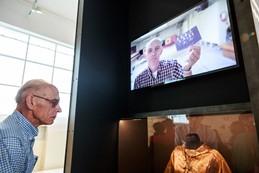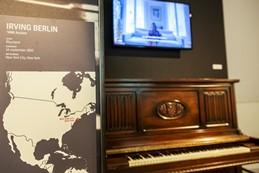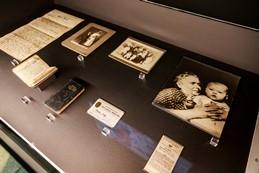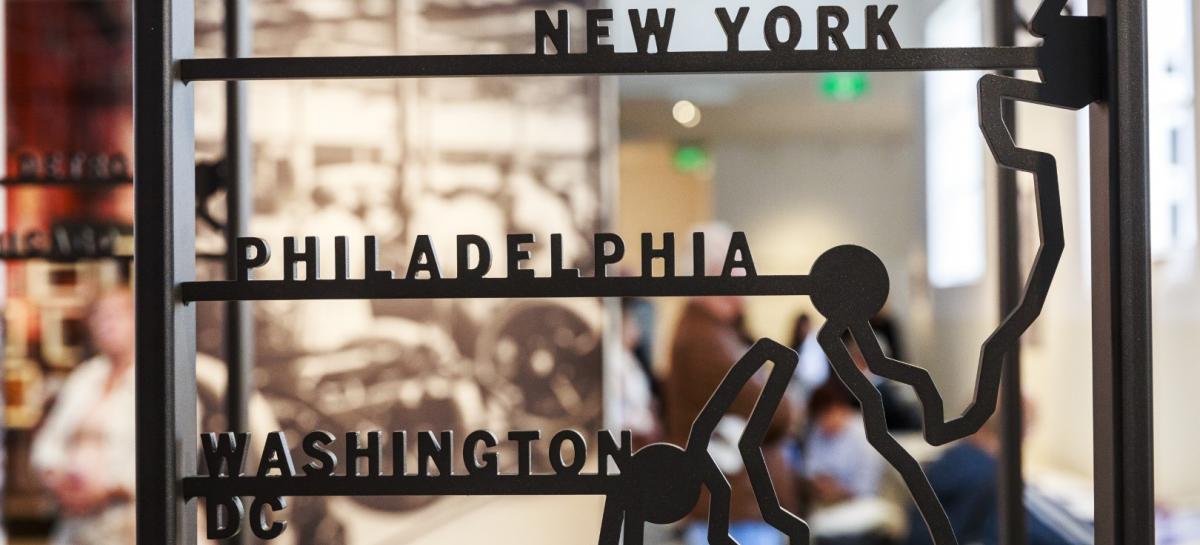Following up on these questions, we added the important element of 'memory' in the renewed musum hall about the arrival. How do the descendants of Red Star Line passengers remember their family history, and how does this determine who they are in contemporary American society? To get answers, the museum talked to four descendants of Red Star Line passengers in the US and in France. Their filmed testimonies and some of their personal objects are central.
Ellen Bledsoe Rodriguez
Ellen is the daughter of immigrant Bessie Cohen and lives in California. Bessie Cohen crossed over from Russia in 1921 as a little Jewish girl. When she arrived, she and her sister - without their parents - were stuck in the infirmary on Ellis Island for nine months. Eventually Bessie entered the U.S. and for that she remained grateful all her life. Her mother's stories about the crossing to and arrival in America were an integral part of Ellen's childhood. According to her liberal and tolerant beliefs, she calls the whole adventure her mother's legacy. For her, America must be faithful to the tradition of ultimate refuge. Her mother always emphasized hospitality.
Caroline Emmet
Caroline Emmet is the granddaughter of the famous musician Irving Berlin, who arrived in the US on a Red Star Line ship as a young boy from a poor Jewish-Russian family. He grew up in the slums of New York but eventually became a world famous composer. Caroline Emmet became interested in her Jewish roots through her mother Linda. Caroline tried to build a life of her own and set herself apart from her impressive and omnipresent grandfather. It was not easy to build her own successful life in such a privileged environment, and with the heroic 'from-rags-to-richess'-story of her grandfather.
Ed Van Rossen
Ed Van Rossen belongs to the 3rd generation of two Belgian immigrant families from Detroit. Now the city is in decline, but at the beginning of the twentieth century it was a thriving industrial city to which many migrants migrated. There was a Belgian community with a thriving community life. Ed still goes to the Cadieux Café, where the interior and the feather bowling alley are still reminiscent of Belgium's roots, but where the clientele is made up of Americans of all kinds. Ed has a unique perspective on life in Detroit, Belgian community life and immigration to the US both past and present. He looks at this from a distinctly nostalgic, conservative, 'All American' perspective.
Tom Wolf
Tom Wolf is the grandson of Carl Wolf, a German immigrant who went to the U.S. at the turn of the last century. He settled in Lancaster (Pennsylvania) in a neighborhood where many Germans already lived. Cabbage hill was a real German community, many of whose members migrated with the ships of the Red Star Line. Those who were on the same ship met each other regularly. Tom Wolf himself lived in Lancaster as a little boy, and experienced the last moments of the German migrant community there in the middle of the twentieth century, before the neighborhood changed its face forever.
 |  |
 |  |
Photographs: Victoriano Moreno | |


